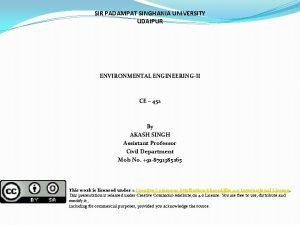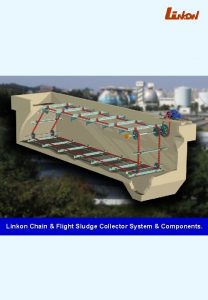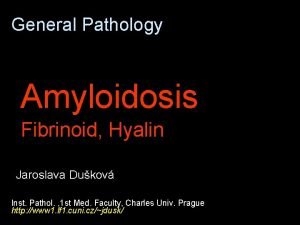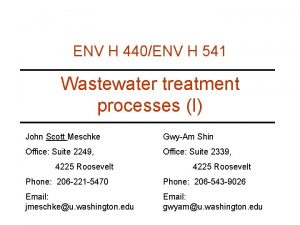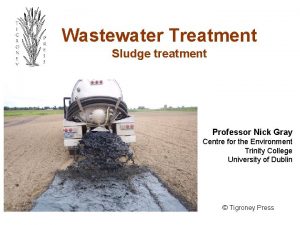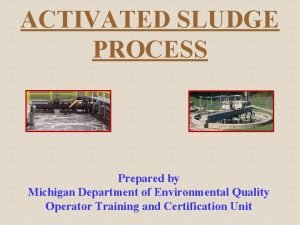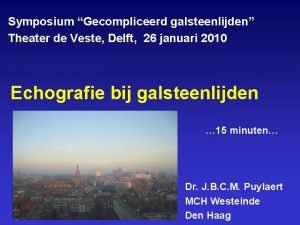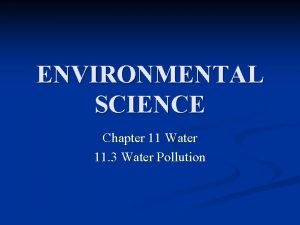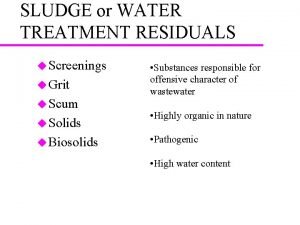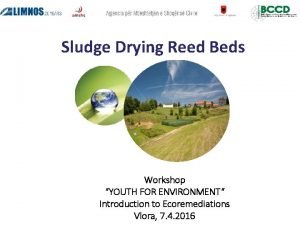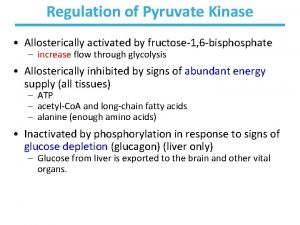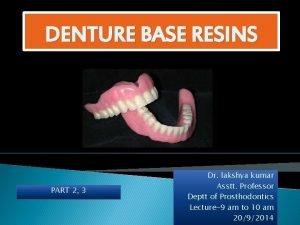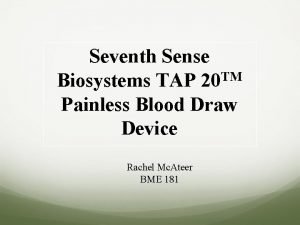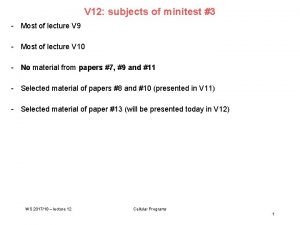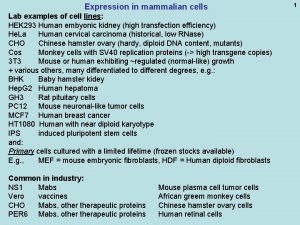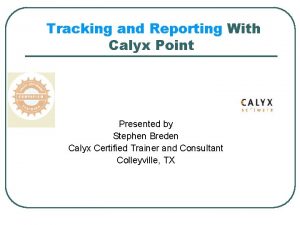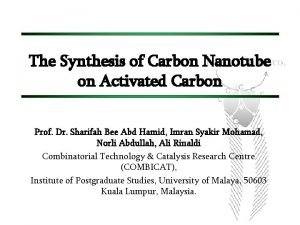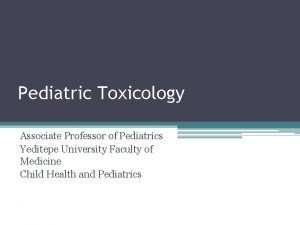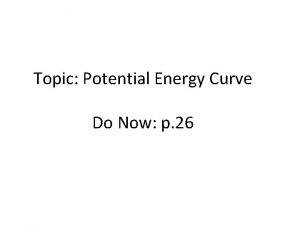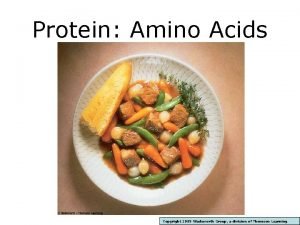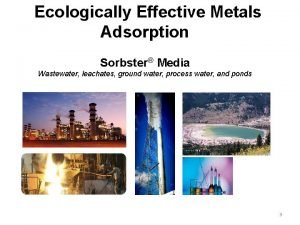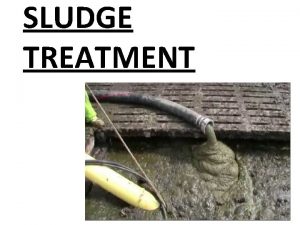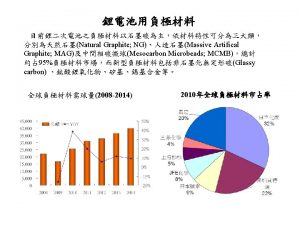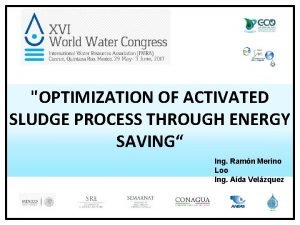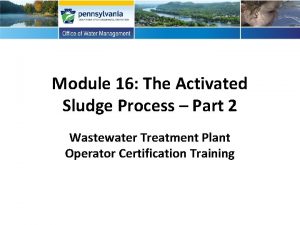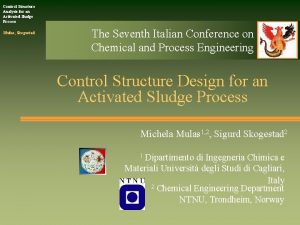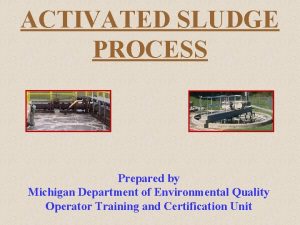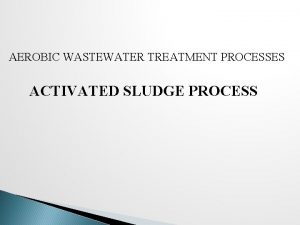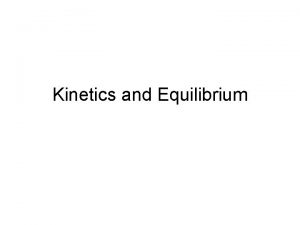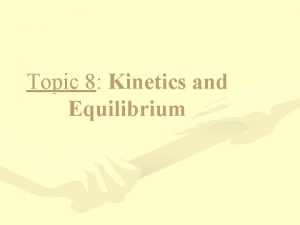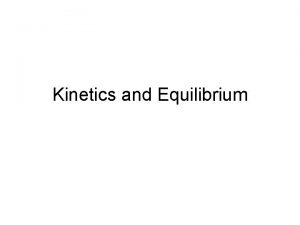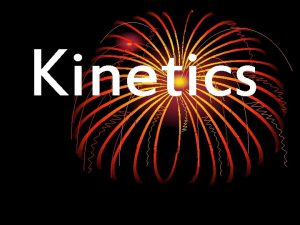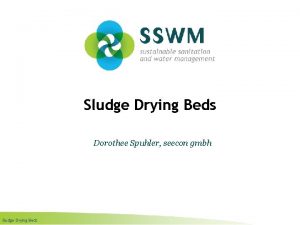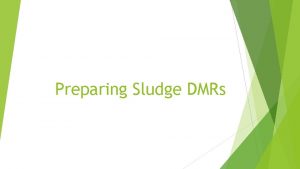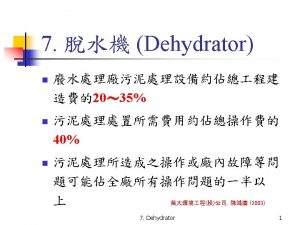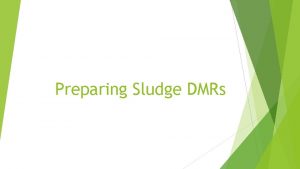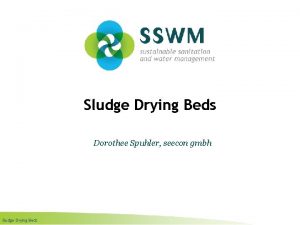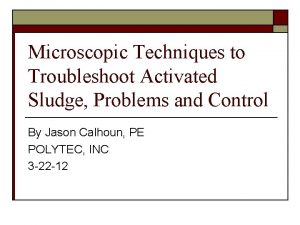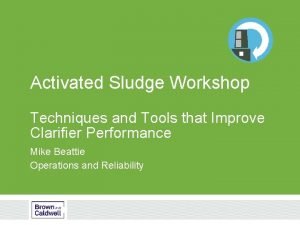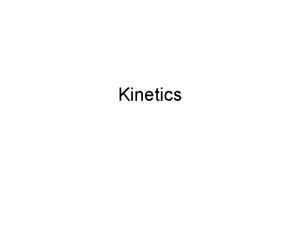A PRESENTATION ON ACTIVATED SLUDGE PROCESS AND KINETICS























![Substrate Balance Equation (d. S/dt)V = QSo – QS – V[μ m. XS/ Y(Ks+S)] Substrate Balance Equation (d. S/dt)V = QSo – QS – V[μ m. XS/ Y(Ks+S)]](https://slidetodoc.com/presentation_image_h2/4566fb441dcd0a25e37e50686ba0167c/image-24.jpg)


- Slides: 26

A PRESENTATION ON ACTIVATED SLUDGE PROCESS AND KINETICS OF ASP

Activated Sludge Process is the suspended-growth biological treatment process, based on providing intimate contact between the sewage and activated sludge. The Activated Sludge is the sludge obtained by settling sewage in presence of abundant O 2 so as to enrich with aerobic micro-organisms.

Activated sludge in sewage in presence of oxygen results into: Ø Oxidation of organic matter present. Ø Coagulation and flocculation of suspended and colloidal matter Under the activated sludge Process basically three processes occurs: -

Oxidation The organisms oxidize a portion of organic Matter present in sewage into CO 2, water and energy. Organic matter + O 2+ Bacteria CO 2+ H 2 O+ NH 3 +Energy + other end products

Synthesis In second phase the other microbes get converted into new bacterial cells using a part of energy released in oxidation Organic Matter+O 2+Bacteria+Energy New microbial cells

Endogenous Respiration Finally the new microbial cells begin to consume their own cell tissue to obtain energy for cell maintenance. New microbial cell tissue + 5 O 2 5 CO 2+NH 3+2 H 2 O+Energy

Description of Activated sludge processes: Conventional plug flow: - Settled water and recycled activated sludge enter the head end of the aeration tank and are mixed by diffused air or mechanical aeration. During the aeration period adsorption, flocculation and oxidation of organic matter occurs. Modified aeration: - It is similar to conven-tional plug flow except that shorter aeration time and higher F/M ratio are used.

Tapered aeration: - Varying aeration rates are applied over the tank length depending on the oxygen demand. Greater amounts of air are supplied to the head end of the aeration tank, and the amount diminish as the mixed liquor approaches the effluent end.

Compressed air Reactor Secondary clarifier Effluent Primary effluent SLUDGE RETURN Tapered aeration SLUDGE WASTE

Step feed aeration Generally three or more parallel channels are used. The settled waste water is introduced at several point in the aeration tank to equalize the F/M ratio, thus lowering peak oxygen demand.

Compressed air Reactor Secondary clarifier SLUDGE RETURN Primary effluent STEP FEED AREATION Effluent SLUDGE WASTE

Extended aeration : It operate in the endogenous respiration phase of the growth curve, which requires a low organic loading and long aeration time.

Primary effluent Reactor Secondary clarifier SLUDGE RETURN Extended Aeration Effluent SLUDGE WASTE

Raw water screens Grit chamber Primary Settling tank aeration Secondary Settling tank Reareation Activated Sludge return Activated Sludge Pump Sludge Thickener Sludge Digestion chlorination Effluent to disposal To Sludge Drying Flow Diagram of ASP

Growth And Food Utilization 1)Assimilation: The microorganisms must first become assimilated to their surroundings and food provided also called Lag Phase. 2)Log Growth Phase: In this phase the growth is rapid. Here bacterial cells reproduce binary fission.

3)Stationary Phase: In this phase the production of new cells is roughly offset by death and endogenous respiration. 4)Endogenous Phase: In final phase, the cells are unable to obtain food from external sources and result into decrease in biomass concentrations.

Cell Growth The new cell produced undergoes an auto oxidation which involves the breakdown of organics in cell itself to produce energy for the maintenance of remaining cell mass. Thus, there is continuously a fractional decrease in cell mass with time. d. X/dt = μ X d. X/dt = the growth rate of biomass, mg/L t X = the concentration of biomass, mg/L μ = the growth rate constant, 1/t

Factors affecting the rate of biomass production and food utilization: - 1) Temperature 2) p. H 3) Toxicants

Kinetics of activated Sludge process Assumptions: Ø Ø Ø Ø Complete mixing in aeration tank. Influent substrate concentration is constant. No microbial solids in raw water. All reactions occur in reactor. No microbial activity in clarifier. No Sludge accumulation. Steady state conditions prevails.

ACTIVATED SLUDGE KINETIC MODEL A, T, Va, X, Se Q(1+R) X, Se Q, So (Q-Qw), Xe, Se Secondary Clarifier RQ, Xr, Se Q w , X r, S e

Microorganism and Substrate Mass Balance Rate of accumulation = Biomass in + Biomass of biomass in system growth - biomass out (d. X/dt)V = QXo + V [rg- kd. X ] –QX rg = μ m. XS /(Ks+S) (d. X/dt)V = QXo + V[μ m. XS/(Ks+S) - kd. X ] - QX rg = Growth rate of biomass Kd= Endogenous decay coefficient.

Hydraulic retention time (d. X/dt)V = Zero QX = VX [μm. S/(Ks+S) - kd ] Q/V = μ m. S/(Ks+S) - kd =1/θ θ = Hydraulic retention time

Mean Cell Retention Time The time for which the cells remain in the system. It is given asθc = Mass of solids in system leaving system/day θc = VX/(Qw. Xw+ Qe. Xe)
![Substrate Balance Equation d SdtV QSo QS Vμ m XS YKsS Substrate Balance Equation (d. S/dt)V = QSo – QS – V[μ m. XS/ Y(Ks+S)]](https://slidetodoc.com/presentation_image_h2/4566fb441dcd0a25e37e50686ba0167c/image-24.jpg)
Substrate Balance Equation (d. S/dt)V = QSo – QS – V[μ m. XS/ Y(Ks+S)] Y=Decimal fraction of Food mass converted to biomass For Steady State d. S/dt = Zero (So – S) = θ[μ m. XS/Y(Ks+S)]

Effluent concentration X = μm(So - S)/K(1+kdθ) X = Y(So - S)/(1+kdθ) Effluent substrate concentration S = Ks(1+θkd)/θ(Yk - kd)-1

 Activated sludge process flow chart
Activated sludge process flow chart Activated sludge process
Activated sludge process Flight sludge collector
Flight sludge collector Sludge dumbbells
Sludge dumbbells Secondary wastewater treatment
Secondary wastewater treatment Sludge press
Sludge press Sludge treatment
Sludge treatment Epehólyag fala megvastagodott
Epehólyag fala megvastagodott Sludge density index
Sludge density index Gecompliceerd galsteenlijden
Gecompliceerd galsteenlijden Objective of water pollution
Objective of water pollution Sludge drying beds
Sludge drying beds Negreplisse
Negreplisse Pyruvate kinase
Pyruvate kinase Denture base parts
Denture base parts Community speed watch signs
Community speed watch signs Set top box number
Set top box number Sense tm
Sense tm Fluorescence activated cell sorting
Fluorescence activated cell sorting Fluorescence activated cell sorting
Fluorescence activated cell sorting Calyx point printer not activated
Calyx point printer not activated Activated carbon
Activated carbon Izoniyazid
Izoniyazid Potential energy diagram labeled
Potential energy diagram labeled Digestion of protein in body
Digestion of protein in body Sorbster
Sorbster Activated b cell
Activated b cell

